Bikat Adventures - India's only learning based and the safest adventure travel operator. We organize Trekking, Cycling, Skiing & Mountaineering Expeditions in India and Nepal.
Don't wanna be here? Send us removal request.
Text
0 notes
Text
0 notes
Text
0 notes
Text
0 notes
Text
Har ki Dun - by RJ JASSI
🌄 Discover the magic of Har Ki Dun Trek in the Garhwal Himalayas—lush forests, alpine meadows, and breathtaking peaks await! 🏔️ Perfect for trekkers of all levels, tune in to RJ Jassi's audio journey for a virtual adventure. 🎧 #HarKiDun #TrekLife
Listen now: https://har-ki-doon-trek-rj-jassi.simplecast.com/episodes/har-ki-doon-trek-rj-jassi
0 notes
Text
What is the story behind Kedarkantha and Juda-ka-Talab?
🌌 A journey through legends and peaks. From the story of Shiva’s meditation to the Pandavas’ pursuit of redemption, the Kedarkantha Trek is more than just a hike—it’s an experience of wonder. 🏞️🌟 #mythicalhimalayas #kedarkanthatrek
0 notes
Text
🌄 Har Ki Dun: The Valley of Gods!
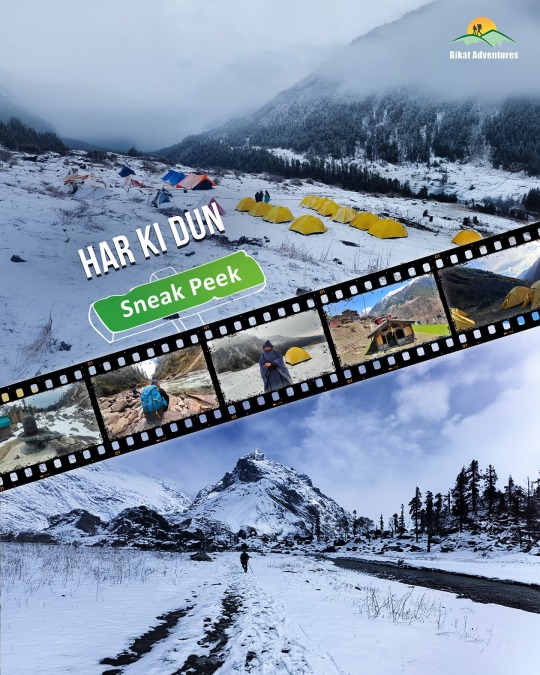
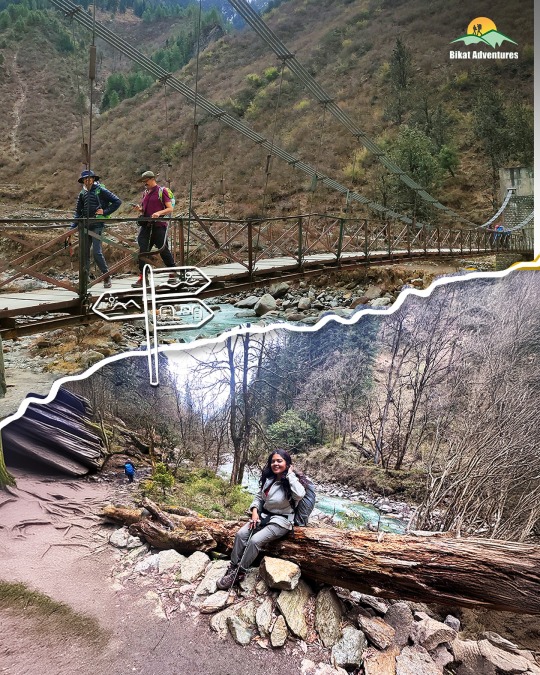
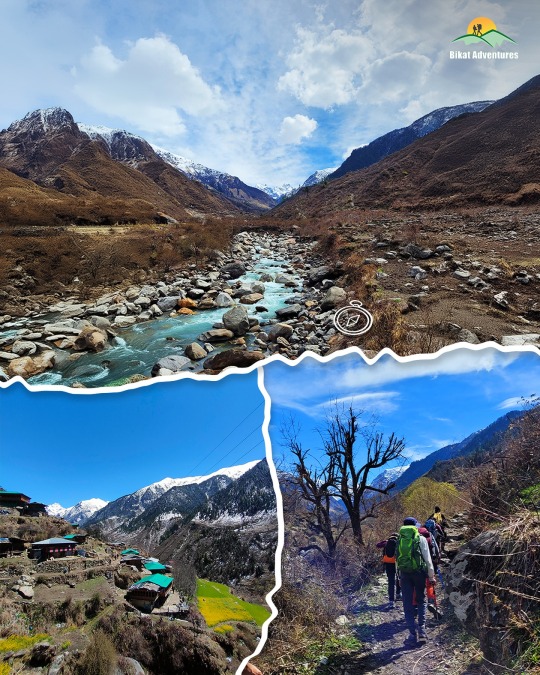
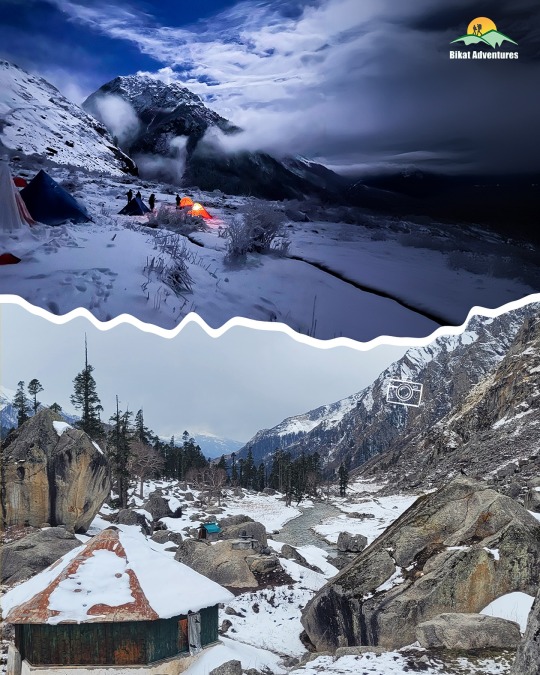
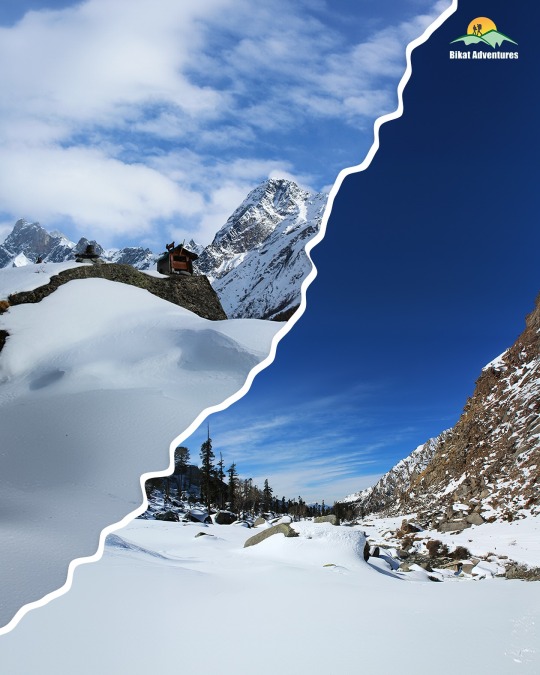
A trek that takes you through quaint villages, lush meadows, dense forests, and breathtaking Himalayan views. Are you ready for this magical journey? 🏔️✨ #ValleyOfGods #HarKiDun
Batches Available: https://www.bikatadventures.com/Home/Itinerary/Har-Ki-Dun-Trek
0 notes
Text
Ode to Nag Tibba

Nag Tibba, a mountain so grand, Calls to us from the highland land. A journey of joy, a weekend’s thrill, Trekking through forests, up and down the hill. Pantwari’s farms, a sight to behold, Homegrown wonders, a story untold. Climbing higher, the views open wide, Solitude and peace, our faithful guide. To the summit, we make our way, Surrounded by oaks, a green display. The top is reached, the Himalayas in sight, Moments of silence, a true delight. Back down the trail, a different view, Auntar’s welcome, our trek is through. Nag Tibba, a trek that sets the soul free, A mountain escape, for you and me.
The Poem’s Narrative: An Ode to the Wonders of Nag Tibba
This evocative poem is inspired by the article published by Pooja Dhiman captures the essence of the Nag Tibba trek — a weekend escape that offers adventure-seekers a tantalizing taste of the Himalayan highlands. Through her carefully crafted verses, Dhiman paints a vivid picture of the journey, from the charming villages and lush forests to the triumphant ascent to the snow-capped summit and the serene moments of reflection along the way.
Each stanza resonates with a sense of wonder and appreciation for the natural beauty that surrounds the trekker. Dhiman’s words transport the reader, inviting them to join her on this rejuvenating journey where the simple pleasures of being immersed in the great outdoors take center stage. The poem’s rhyming structure and easy-to-follow language make it accessible to all, further emphasizing Dhiman’s inclusive spirit and her desire to share the magic of Nag Tibba with the world.
Pooja Dhiman: Adventurer, Explorer, Mountain Enthusiast

Pooja Dhiman is a modern-day renaissance woman — part solo backpacker, part Muay Thai boxer, and full-time mountain goat. In April 2016, she took a leap of faith, quitting her conventional job to embark on a journey of exploration and self-discovery around the world.
Today, Dhiman’s wanderlust has led her to the captivating Himalayan highlands, where she spends her days trekking, hiking, and immersing herself in the natural wonders that these majestic mountains have to offer. With an infectious enthusiasm and a keen eye for detail, Dhiman shares her adventures with her followers on Instagram (@thismadmadworld), inspiring others to step out of their comfort zones and experience the transformative power of the great outdoors.
In her latest article, Dhiman takes readers on a visual journey through the Nag Tibba trek, using her words and images to capture the magic of this weekend escape. Her passion for the Himalayas shines through in every sentence, inviting readers to pack their bags and join her on an unforgettable adventure in the mountains.
0 notes
Text
Nag Tibba Trek: A Comprehensive Guide to Exploring the Serpent's Peak
Nag Tibba, or the "Serpent’s Peak," is a celebrated trekking destination in Uttarakhand, India, popular among beginners due to its accessible trails and breathtaking scenery. This 3,022-meter peak, nestled in the Garhwal Himalayas, offers trekkers a serene retreat complete with views of snow-capped mountains, lush forests, and cultural landmarks. Here’s a detailed guide to help you plan your Nag Tibba trek, whether you’re a seasoned hiker or setting off on your first mountain adventure.
Overview of the Nag Tibba Trek
Location and Altitude
Nag Tibba is the highest peak in its range within the Garhwal Himalayas, standing at 3,022 meters (9,915 feet). The trek typically starts from the village of Pantwari, easily accessible from Dehradun. Trekkers traverse a mix of terrains, from oak forests to rocky paths, finally reaching a summit that provides stunning views of prominent Himalayan peaks like Bandarpoonch, Swargarohini, and Gangotri.
Ideal for Beginners
This trek is particularly suitable for beginners due to its manageable distance (approximately 19 kilometers round-trip) and well-marked paths. The steady ascent and mild altitude make it less physically demanding than other Himalayan treks, yet the experience remains equally rewarding.
Key Highlights of the Trek
Nag Tibba Temple: Near the base camp lies the Nag Tibba Temple, a small structure dedicated to Nag Devta, the local serpent god. This temple holds cultural and religious significance, especially for local villagers who offer prayers here for protection and prosperity.
Panoramic Views from the Summit: Reaching the summit, trekkers are rewarded with a breathtaking panorama of the Himalayas, featuring peaks like Kedarnath, Chanabang, and Bandarpoonch. This spot is ideal for photography, especially during sunrise and sunset.
Diverse Terrain and Wildlife: The trek spans dense forests, open meadows, and rocky paths, offering a variety of landscapes and habitats. Along the way, trekkers may spot wildlife, including Himalayan black bears, various bird species, and, with a bit of luck, elusive leopards.
Best Seasons to Visit Nag Tibba
The trek can be enjoyed nearly year-round, with each season offering a unique experience.
Winter (December to February): Snow blankets the trail, transforming Nag Tibba into a winter wonderland. However, temperatures can drop below freezing, making the trek challenging. Winter trekkers must pack appropriate gear, as the snow-laden trail requires waterproof boots, warm clothing, and extra safety precautions.
Spring (March to May): Spring brings blooming rhododendrons and pleasant temperatures, making it a great time to experience vibrant colors and milder weather. Daytime temperatures range from 5°C to 22°C, ideal for those who prefer mild climates.
Summer (June to August): The landscape turns lush and green in summer, although there may be occasional rain. Be prepared for potential rain showers and leeches in the rainy season. Nights remain cool, with daytime temperatures up to 30°C.
Autumn (September to November): Clear skies, cool temperatures, and minimal rainfall make autumn an ideal season for this trek. Many consider it the best time to visit due to stable weather and unparalleled visibility, with temperatures ranging from 5°C to 20°C.
Typical Nag Tibba Trek Itinerary
Most Nag Tibba treks follow a two-day itinerary, with an optional third day for those who prefer a more relaxed pace.
Day 1: Drive to Pantwari and Trek to Nag Tibba Base Camp
Starting Point: Pantwari village (4,650 feet)
Distance: 5.5 kilometers
Duration: 4–5 hours
Highlights: The trek begins on a cemented path before transitioning to rockier trails and oak forests. Trekkers will pass scenic farmlands and rhododendron groves, eventually reaching the base camp near the Nag Tibba Temple. Night accommodations typically involve tents, allowing trekkers to camp under the stars.
Day 2: Summit Push and Descent
Distance: 4 kilometers round-trip
Duration: 4–6 hours
Highlights: Trekkers embark on a steep ascent early in the morning, with the possibility of encountering snow in winter. After soaking in the 360-degree views from the summit, trekkers descend to Pantwari. Most complete the trek by late afternoon, making it possible to return to Dehradun on the same day.
How to Reach Nag Tibba
From Dehradun: Pantwari is around 90 kilometers from Dehradun, accessible via a 4-5 hour drive. Many trekkers opt to travel to Pantwari a day before the trek, allowing for an early morning start on Day 1.
From Delhi: Reach Dehradun by train, bus, or flight, and then continue to Pantwari via the same route.
Practical Tips for the Trek
Physical Preparation: Although the trek is beginner-friendly, some physical conditioning helps. Basic exercises to build stamina and leg strength can make the hike more enjoyable.
Packing Essentials: Trekkers should pack light but include essentials like waterproof boots, layered clothing, rain protection, a basic first-aid kit, energy snacks, and plenty of water. Winter trekkers should carry extra warm clothing.
Safety and Respect for Nature: Stick to marked trails, avoid littering, and respect the sanctity of the Nag Tibba Temple. Trekkers are encouraged to support eco-friendly practices to preserve the area’s natural beauty.
Accommodation and Trekking Packages
Numerous tour operators offer guided Nag Tibba trekking packages that typically include transportation from Dehradun, meals, camping equipment, and a guide. Prices range from ₹4,000 to ₹8,000, depending on the season, inclusions, and comfort level. Local guides are recommended for those new to the area or trekking solo.
Why Nag Tibba? The Trek’s Unbeatable Appeal
Nag Tibba is a testament to the serene beauty and rich culture of the Himalayas. Its accessibility, diverse landscapes, and relatively easy trails make it a top choice for beginner trekkers and experienced hikers alike. The trek’s proximity to Dehradun and Delhi also makes it perfect for a quick weekend escape, allowing for a blend of adventure and cultural exploration without requiring extended leave.
Whether you’re hoping for a peaceful getaway, stunning photography opportunities, or a stepping stone into Himalayan trekking, Nag Tibba offers a little bit of everything. Prepare well, respect the mountain, and let the breathtaking views and tranquility of the Garhwal Himalayas make this trek an unforgettable journey.
0 notes
Text
Ready, Set, Summit: Your Guide to an Unforgettable Kedarkantha Trek
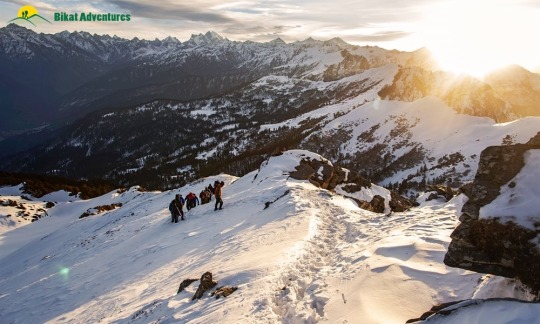
The Kedarkantha trek is a highly acclaimed adventure nestled in the Garhwal Himalayas of Uttarakhand, India. Known for its picturesque landscapes, accessible summit, and manageable difficulty, Kedarkantha offers a perfect introduction to Himalayan trekking, especially for beginners. Rising to an elevation of approximately 12,500 feet, this trek offers a journey through dense forests, serene alpine meadows, and spectacular mountain views that captivate both novice and experienced trekkers alike.
This guide covers everything you need to know for a successful Kedarkantha trek. From the ideal trekking seasons to preparation tips, route details, and essential gear, let’s unravel the wonders of Kedarkantha together.
1. Why Choose the Kedarkantha Trek?
The Kedarkantha trek’s allure lies in its unique blend of scenic diversity, manageable altitude, and the thrill of summiting a Himalayan peak. The trek covers around 20 kilometers and is classified as a moderate trek, making it ideal for beginners who wish to experience high-altitude trekking without extreme difficulty.
One of the highlights is the breathtaking sunrise from the Kedarkantha summit. At dawn, trekkers witness the sun rising over the iconic Yamunotri and Gangotri ranges, creating a magical atmosphere. Another reason for its popularity is the trek’s accessibility throughout most of the year, with each season offering distinct natural beauty.
2. Best Seasons for the Kedarkantha Trek
The Kedarkantha trek can be undertaken almost year-round, each season offering unique experiences. Here’s a breakdown of what each season brings:
Winter (December to February): Winter is the most popular time for this trek. The trail transforms into a snowy paradise, with temperatures often dropping to -10°C at night. Snow lovers find this season magical as the landscape is blanketed with snow, creating unforgettable memories.
Spring (March to April): As the snow melts, vibrant rhododendron flowers bloom along the trail, adding color to the scenery. Daytime temperatures range from 5°C to 15°C, making it comfortable for trekking.
Summer (May to June): Summer offers lush greenery, blooming flora, and clear skies. This season’s moderate temperatures (10°C to 20°C during the day) make it popular among families and first-time trekkers.
Autumn (September to November): Autumn brings post-monsoon clarity, providing crisp mountain views. With stable weather and minimal haze, this is another favored season for trekkers seeking serene landscapes without heavy snowfall.
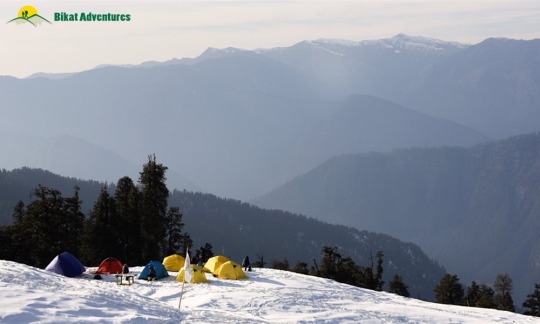
The Kedarkantha trek typically follows a 5-day itinerary. Here’s a day-by-day overview:
Day 1: Dehradun to Sankri (6,400 feet) Starting from Dehradun, a scenic drive of 210 kilometers brings you to Sankri, the trek’s base camp. Passing through beautiful landscapes, this journey provides the first glimpse of Himalayan majesty.
Day 2: Sankri to Juda Ka Talab (9,100 feet) This day involves a 4-kilometer trek from Sankri to Juda Ka Talab, a tranquil lake surrounded by dense pine forests. In winter, this region is often covered in snow, giving trekkers a taste of the snowy trails ahead.
Day 3: Juda Ka Talab to Kedarkantha Base Camp (11,200 feet) A slightly steeper ascent awaits, as trekkers cover another 4 kilometers to Kedarkantha Base Camp. This leg offers scenic views and prepares you for the ultimate summit day.
Day 4: Summit Kedarkantha (12,500 feet) and descend to Hargaon The summit day is the most challenging but also the most rewarding. Trekkers start early to reach the summit by sunrise, witnessing unforgettable panoramic views before descending to Hargaon.
Day 5: Hargaon to Sankri The trek concludes with a gentle descent back to Sankri, marking the end of an exhilarating adventure.
4. Kedarkantha Trek Difficulty and Fitness Requirements
The Kedarkantha trek is generally rated moderate on the difficulty scale, suitable for beginners with basic fitness levels. Trekking involves 4-5 hours daily, except on summit day, which can extend to 7-8 hours. The most demanding segment is the summit ascent, especially challenging in winter due to snow.
To fully enjoy the trek, a preparatory fitness routine is recommended. Regular jogging, cardio exercises, and leg-strengthening workouts like squats and lunges are ideal. Additionally, practice hikes on uneven terrain can help improve balance and endurance.
5. Essential Gear for the Kedarkantha Trek
Proper equipment enhances safety and comfort on this high-altitude trek. Here’s a checklist of essential items:
Clothing: Layered clothing is crucial. Start with thermal wear as a base layer, followed by fleece or down jackets for insulation, and a waterproof outer layer.
Footwear: Waterproof, high-ankle trekking shoes with sturdy soles are essential. Microspikes and gaiters are highly recommended for snow trekking.
Backpack: A lightweight, comfortable backpack with padded shoulder straps and hip belts is ideal for carrying essentials.
Other items include a trekking pole (for stability on steep trails), a water bottle, sunscreen, a hat, gloves, and a headlamp for summit day.
6. Weather Considerations and Preparation Tips
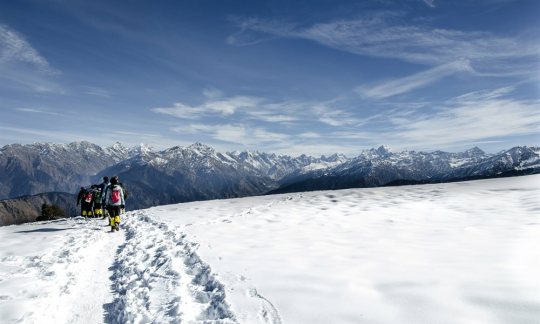
Kedarkantha’s weather can vary significantly depending on the season:
Winter: Snowfall can reach several feet, especially above 10,000 feet, making microspikes and proper insulation mandatory.
Spring and Summer: Milder weather makes hydration essential. Light but protective clothing shields from intense sunlight at higher altitudes.
Autumn: Clear skies with stable temperatures are ideal, though early snowfall is possible in November.
Acclimatization is essential, even though Kedarkantha’s altitude is moderate. Take breaks, stay hydrated, and avoid overexertion to prevent altitude sickness.
7. Challenges of the Kedarkantha Trek
While Kedarkantha is beginner-friendly, it does present certain challenges:
Summit Day’s Steep Ascent: The summit day’s steep incline, combined with snow, demands mental resilience and physical endurance.
Inclement Weather: Winter storms and sudden snowfalls can create slippery trails and limited visibility, requiring caution and adaptability.
With these challenges in mind, follow the guidance of experienced trek leaders and stay prepared for changing weather conditions.
8. Exploring Beyond Kedarkantha: Nearby Treks
For those inspired by Kedarkantha, Uttarakhand offers several other beautiful trekking destinations:
Nag Tibba Trek: A short, 2-day trek near Mussoorie, ideal for beginners and weekend adventurers.
Har Ki Dun Trek: A historical trek offering views of snow-capped peaks and a glimpse into local legends.
Valley of Flowers Trek: Known for its vibrant alpine flowers, this trek is best during the monsoon season.
Chopta-Tungnath-Chandrashila Trek: A moderate trek with the added attraction of visiting the highest Shiva temple in the world.
Each of these treks offers unique landscapes, cultural experiences, and varying levels of challenge, making Uttarakhand a treasure trove for trekkers.
9. Safety Tips and Guidelines
Safety should always be a priority. Here are some tips to keep in mind:
Stay with the Group: Sticking with your trekking group reduces the risk of getting lost on the trails.
Listen to Your Guide: Trek leaders provide valuable advice on handling difficult sections and responding to weather changes.
Pack Light: A heavy backpack can make the trek more tiring. Pack only essential items.
Stay Hydrated and Nourished: High-altitude trekking suppresses thirst, so drink water regularly and consume high-energy snacks.
10. Conclusion
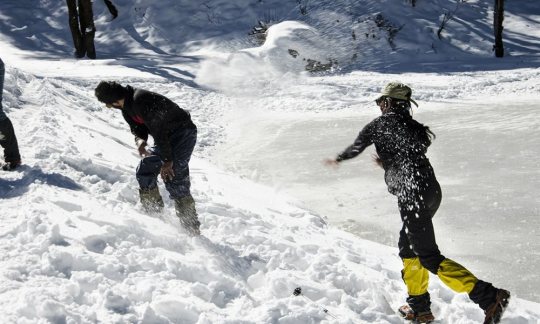
The Kedarkantha trek is a perfect blend of adventure, scenic beauty, and cultural exposure, offering an unforgettable experience for beginners and seasoned trekkers alike. Whether you are drawn by the snow-laden landscapes of winter, the floral blooms of spring, or the crisp, clear views of autumn, Kedarkantha is a destination that promises lasting memories.
As you prepare for this journey, remember that every trek is unique, each offering its own lessons and rewards. Pack wisely, train diligently, and embark on the Kedarkantha trek with an open heart and a spirit ready to embrace the Himalayas.
0 notes
Text
Nag Tibba: A Trek to Remember

We started off in the night’s embrace, Leaving Delhi for a wild, new place. Rishikesh greeted with rivers bright, As we set our sights on the morning light. At Pantwari, the adventure began, With eager hearts and a joyful plan. Through forests lush and trails so steep, We climbed toward dreams, our spirits to keep. Snow-capped peaks kissed by dawn, Nature’s beauty felt like a song. With friends beside, we shared the thrill, In the heart of the mountains, time stood still. Around the fire, with laughter and cheer, We sang our songs for all to hear. Under a blanket of twinkling stars, We felt the magic of who we are. As we descended through pine and mist, Each step held memories we couldn’t resist. Though the trek came to a gentle end, In our hearts, the mountains will always blend.
In the heart of winter, a group of eager adventurers set off from Delhi for their first trek to Nag Tibba, a stunning peak in the Himalayas. The journey began with a night bus ride to Rishikesh, followed by a thrilling ascent to Pantwari, the trek’s starting point. With excitement bubbling, they ventured into dense forests, surrounded by the whispers of nature and the thrill of adventure. As they climbed higher, the group forged friendships amidst the breathtaking scenery, culminating in a memorable night around a crackling campfire, sharing stories under a sky full of stars.
On the second day, they reached the summit, where snow-capped peaks greeted them like old friends, and the peace of nature enveloped their spirits. As they descended, the lush landscape transformed, yet the bond created in the mountains remained strong. The trek concluded with a sense of accomplishment and cherished memories, as the group returned home with hearts full of adventure. Nag Tibba Trek was not just a destination but the beginning of friendships and personal growth, leaving an indelible mark on each adventurer’s soul.
0 notes
Text
Kedarkantha: A Journey Through Legends and Snow

Lies Kedarkantha, wrapped in snow.
Starting from Sankri’s quiet start,
The trek reveals nature’s heart.
Through pine forests, winding deep,
Stories of Shiva, in silence, keep.
At Juda-ka-Talab, calm and clear,
A lake born of hair—a tale held dear.
Shiva found peace in the mountain air,
Till a bull disturbed him there.
Off he went to Kedarnath’s height,
Leaving stories in morning light.
At twelve thousand feet, under skies so wide,
A shrine awaits on the mountainside.
With Trishul planted firm in snow,
Locals come with reverence to show.
The Pandavas sought blessings here,
But Shiva, disguised, stayed near.
Bheem chased him down; parts fell away,
Creating Kedarkantha, where legends stay.
Swargarohini shines, heaven-bound,
Bandarpoonch and Black Peak around.
In winter’s cloak, the world stands still,
A wonderland for heart and will.
So walk with care on this ancient Kedarkantha Trek,
For Kedarkantha calls—no looking back.
I was 35, feeling the pull of the mountains, so I set out for Kedarkantha in the heart of Uttarakhand. Starting at Sankri, I found myself surrounded by snow-draped peaks and ancient forests, each step echoing with local lore. The pine trails were more than just scenic paths—they were alive with stories of Shiva and whispered myths, and at Juda-ka-Talab, the stillness of the lake held its own mystery, said to have formed from a strand of Shiva’s hair. The legend goes that Shiva himself meditated here, though disturbed by a bull, he retreated to Kedarnath, leaving behind tales in the snow.
As I climbed higher, reaching nearly twelve thousand feet, the summit opened up in a way I’ll never forget. Beneath an open sky, I found a small stone shrine with a Trishul planted in the snow—a place where locals come to honor the spirit of the mountain. The Pandavas, too, had once sought Shiva’s blessing here, though he appeared in disguise. I could almost picture Bheem chasing him through the peaks, pieces of the legend falling into place.
At the summit, surrounded by Swargarohini, Bandarpoonch, and Black Peak, I felt both humbled and alive. In winter, Kedarkantha transforms into a wonderland; every ridge and rock seems to carry a story. It’s a journey that leaves you with more than memories. It’s as if the mountain itself stays with you, calling you back.
0 notes
Text
0 notes
Text
0 notes
Text
Journey to Har Ki Dun

Through winding paths and treacherous slopes,
We venture where the mountain hopes
To touch the sky, a realm divine,
Where nature's grandeur stands sublime.
From Taluka's thatched-roof shops we start,
Each step a challenge to the heart.
The river rushes far below,
A constant friend, a potential foe.
Doubt creeps in as daylight fades,
In Seema's embrace, our spirit wades.
But morning brings renewed desire,
To climb again, to venture higher.
On mule-back now, through snow-kissed air,
Har Ki Dun Trek beyond compare.
A cradle vast, this valley grand,
Where time and space, in awe, expand.
Brown hills give way to pristine white,
A humbling, awe-inspiring sight.
In silence, nature's grandeur speaks,
Of adventures past and future seeks.
"Journey to Har Ki Dun" is a captivating poem that takes you on a mesmerizing trek through the Himalayas. From the humble beginnings in Taluka to the awe-inspiring vistas of Har Ki Dun valley, this verse captures the essence of a transformative mountain adventure.
The poem paints a vivid picture of:
The physical and emotional challenges of the trek
Moments of doubt and renewed determination
The first magical encounter with snow
The breathtaking beauty of Har Ki Dun valley
A profound connection with nature's grandeur
Experience the thrill of standing "at the edge of all we know" and the humbling majesty of the mountains through this evocative piece.
0 notes